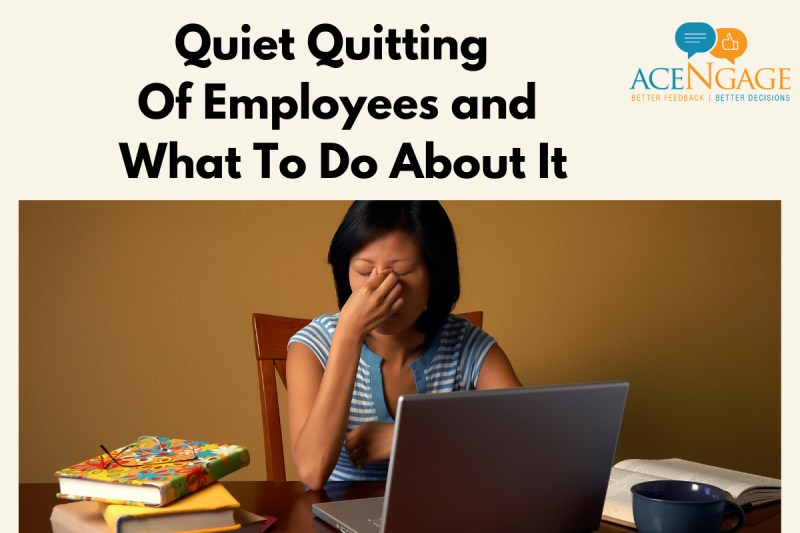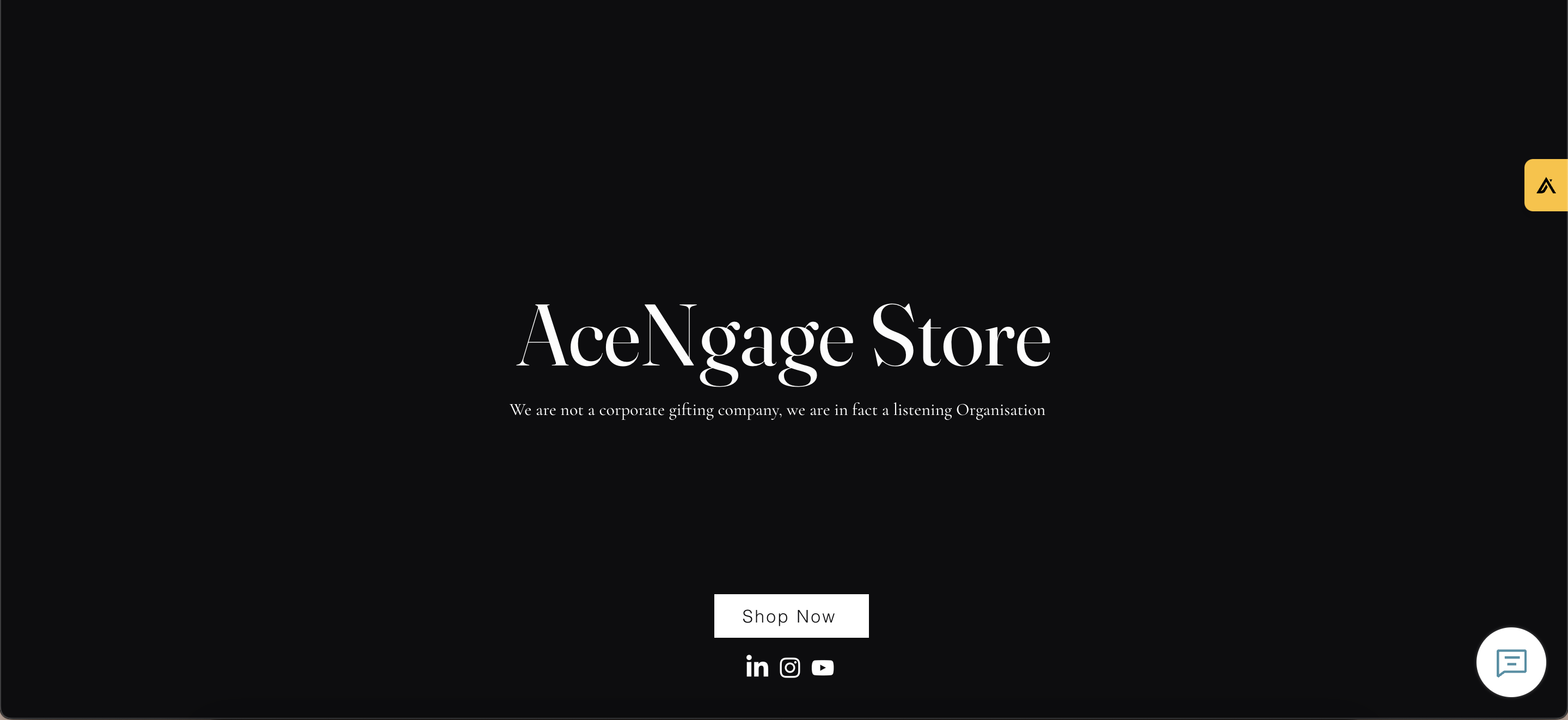Social media is flooded with views and messages based on this new TikTok viral video created on ‘quiet quitting’. The video gained much traction and summarized ‘quiet quitting’ saying that there is more to life than just work and that it is not required to go over and beyond. It stresses that the hustle mindset must be sidelined, by doing only the bare minimum at work.
In other words, quiet quitting is the quitting of doing any extra work and doing only what is required or expected and nothing beyond. As per this trend, employees express that they don’t want to do more than what is required.
The term ‘quiet quitting’ is new, but is the concept new? Absolutely not. We have been aware of the concept for decades. There is more than enough research data and studies done on this concept. It is employee disengagement in another form.
Social media is swelling up with varying views on what quiet quitting is. Before we dive further into its causes and how it needs to be managed, let us understand what quiet quitting is or is not.
What Quiet Quitting Is Not
There are varying views about what quiet quitting is. Before those views color any of our lenses, it is important to know what quiet quitting is not.
- Quiet quitting is not quitting a job.
- Quiet quitting is not laziness or lethargy.
- Quiet quitting certainly is not lesser productivity.
- Quiet quitting is not always underperformance.
What Quiet Quitting Is
- Quiet quitting is the setting up of healthy boundaries at work
- Quiet quitting is a behavior being used to avoid burnout.
- Quiet quitting is an opportunity for employers to re-emphasize work role expectations.
- Quiet quitting is doing the bare minimum work and not doing anything extra.
How Quiet Quitting Started- The Triggers
Quiet quitting could be a culmination of various triggers that have been recurring for some time. The triggers may not be one-off events but rather brewing patterns, recurringly causing disengagement of employees. Time to get a closer look at some key triggers!

Here are some top highlights-
The pandemic and the great resignation have led progressive employers to extend flexibility to employees. With flexibility was an essential part of wellbeing, due to the pandemic. But, when virtual working got started, high productivity was observed amongst employees. But that tipped off the balance between work and life, consequently. High productivity was a result of long hours of work, burnout and no-breaks.
This led to the galvanized need for improved wellbeing. Employees had to slow down. Yet, employees continued to feel a disconnect with employers or their immediate leads because of the double-edged sword of productivity and burnout. There were imbalances in the way of work was assessed and it was not clear. This could be when quiet quitting was seeded. Employees sooner started resigning and led to the great resignation experiencing the mounting inconsistencies in management, leadership and sense of work.
Though companies started to focus on employees’ well-being, the sharp curve of change added more stress to employees. The orientation for virtual work was not entirely fulfilled, which led to haphazard working styles and management decisions.
- Missing in-person teamwork,
- Working in silos,
- Inconsistencies in managerial direction,
- Burnout and continuous adjustment,
- Being part of the unknown, due to the pandemic, and at work
- Witnessing layoffs
- Personal losses on the family and friends’ front
All of this escalated the dilution of personal well-being. Through this journey, if one thing had become clearer to employees, it was to make boundaries higher and more distinct between work and life. The need to avoid burnout not only continued to persist but peaked. After witnessing much, employees may have zeroed in on doing the minimal and taking a step back to re-assess the situation. And leading to side-lining of work priorities and a deeper realization of personal priorities.
If well-being priorities peaked on one side, the other side was dealing with leadership ineffectiveness.
With remote or hybrid working, it is the managers who are expected to anchor, regulate work and manage virtual teaming. And most importantly, they must keep the teams connected and focus on each employee’s engagement levels. But that was the missing link amidst change.
According to Harvard research, 360-degree leadership assessment data showed some interesting insights. It was found that missing intrinsic motivation was not the reason why employees were not doing more than what is required. Instead, data showed that it was because of managers’ inability to build meaningful relationships with employees that led them to be disconnected from their work.
Employees missed having meaningful relationships with their managers. They felt under-valued.
If managers are biased or inconsistent in leadership, tensions among team members are inevitable. Leading to other issues of toxic work culture, resentful employees, lack of rapport and eventually quiet quitting.
When employees are underappreciated and not valued, quiet quitting can be seen as the logical backstep; which is why we see top performers who once were rockstars, lose that spark and fade into the background when not recognized or appreciated.
Missing a promotion after a year long’s hard work and performance could demotivate a top-performing employee. Not being recognized after the successful completion of a difficult project, is attrition waiting to happen, and quiet quitting is almost like a prologue.
Not being compensated with a deserving bonus or a salary hike, could eventually lead to quiet quitting. With expectations not met, employees are prone to tone down their work contributions
When there is confusion or lack of clarity, it causes mistrust and transparency issues at work. After the virtual workplace commenced, employers struggled in ironing out the policies and processes. It was more a situation of ‘refine on the go’. And thus, sprouting scenarios of ambiguity and lack of direction.
This point as we are aware is a crucial aspect of adapting to the virtual workplace.
Questions like-
- How is the evaluation of an employee done in remote working?
- What metrics will be measured?
- How will behavioral aspects be captured in remote working?
- What frameworks can hold the appraisal process together to bring consistency and uniformity to the performance philosophy?
Several questions such as these are still unanswered at workplaces. This could be an underlying reason to escalate issues for employees to quiet quit. What worked before may not work anymore, hence just stick to what is being told.
Now that the pandemic is a few years old, employees have witnessed changes. Ranging from a few performance evaluation cycles to recent layoffs where even the steady or top performers were not spared from headcount corrections. During such practices, any prevalent inconsistencies would have bubbled up to the surface often leading to disgruntled employees who perhaps were already plagued with low morale.
Employees would have tempered their work down, after seeing the discredit given to other employees. And further amplifying unpredictability and losing a sense of purpose at work.
What To Do About It- The Solution

With accelerated virtual working, employees need smart solutions. Traditional processes may not uphold engagement levels any longer. We are in the future of work but processes, policies, and the psychology of work have not yet caught up. There is a lack of clarity on the ‘now’ and the way forward. And because of this, the sense of belonging and security at work has sunk. And this is why more intentional efforts are needed to bridge the gap.
Having said that, there is no single approach to address this concern of quiet quitting or eventual quitting. However, the common theme remains as employee engagement and employee experience. Here are some top recommendations as multipronged solutions-
It is important that employers take stock of employee engagement levels, from time to time. Skip-level meetings, surveys, regularly connecting with employees, and taking contextual feedback are a window to peek into employee concerns. This will help create a current and relevant data source that can be the basis to build and invest in employee engagement.
Employers can invest in third-party partnerships to establish a deeper connection with employees.
This will help gain the trust of employees, back. Acengage offers expert employee engagement services with the help of trained behavioral psychologists. By providing a neutral and safe environment, Acengage establishes a close rapport with your employees and can comfortably gather feedback from them. This feedback can provide organizations with neutral and constructive inputs at grassroots levels.
In a season of uncertainty or change, it is the team leads and managers who can help hold forte and drive the change successfully on the ground. But if the leads are not equipped with the right resources then, it is a recipe for failure. Managers or leads must be adequately trained and prepared to manage virtual teams and engage well with them. Instead of a reactive approach, proactive measures must be taken by managers in guiding employees. This will give employees a better sense of clarity in direction.
Additionally, managers and leads must be trained to exercise and demonstrate high levels of empathy towards employees. It is vital to show employees that they are valued and cared for. Analyzing and developing empathetic relationships can significantly help employees’ retention and high performance.
Third party engagement partners such as Acengage offer Managerial training and coaching for such scenarios and even can develop custom modules.
Employers must work at a phenomenal speed to catch up with the changing times. The needs of employees now are way different than what they were before. Leadership teams must go against the tide to establish robust policies, processes, and systems, now that virtual working is here to stay.
The core driver for this is to sustain the trust factor with employees. Clarity will build trust and employees will be in the ‘know-how’ and what to expect. Maintaining communication and transparency with employees about talent lifecycle functions that impact them is essential.
There must not be any scope for blind spots in employee-related information.
Traditional engagement programs don’t work any longer. Engagement has now become an all-encompassing concept that ranges from learning and growth opportunities to better leadership and work culture.
Employers need to shelve outdated programs. High-time newer engagement policies are recreated blanketing the entire gamut of an employee’s talent lifecycle phases. It does not limit recognition alone but other avenues of the employee experience as well. Engagement needs to be tailored.
The same goes for appraisal systems and parameters. Virtual working requires refined performance parameters. Unlike traditional processes, virtual working includes intangible aspects that need to be catered for in evaluations. For example, behavioral parameters such as visibility and networking, and mentoring, have been fundamental for mid to high-level roles. With virtual working, such parameters need to be measured with upgraded benchmarks. Perhaps making it more specific and an outcome-based metric rather than just reviewing the parameter.
The past trends have been identified with performance excellence, exceeding expectations, and observing outliers who do more than what is required. They are called “ready for the next level”. Management needs to re-ascertain what the new metrics could be. Such a change will renew the perspective on quiet quitting, and respecting work-life and well-being boundaries for employees.
This part is pretty straightforward. It is important to continue focusing on what is working well. Interventions in wellbeing, flexibility, compensation, other benefits, policies, and overall work culture cannot be undermined or compromised. The key is to sustain, maintain and refine what is working well.
Closing note-
Trends will come and go. New terms may be coined. The focus should not be on riding the wave of the hype. But rather to observe and assess if it is a new disruption or an old one.
Employers must keep their ears to the ground to have a close pulse check on their employees. We may refer to it as employee engagement, experience, or perhaps, employee thriving. The focus must be more on the themes to establish which are common and imminent. The difference of these themes could be the time it may take to manifest in different industries according to the triggers. If recurring core issues are recognized and fixed, then peripheral issues may also be addressed.
While the buzz about quiet quitting is on, the lookout should be on what could come next. Research indicates that employers may need to gear up to face another round of resignations. In other words, the next big thing after quiet quitting comes the real quitting. So, how do we reverse quiet quitting? What interventions can be taken to revive the situation? How can we arrest or nullify the impact of quiet quitting? These are some of the questions employers must ask themselves and act on it. The act must be at a foundational level to reform holistically and not as a band-aid approach. If not, such trends will repeat themselves on loop, in newer and fancier jargon.










